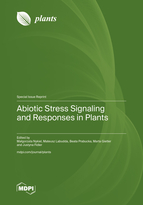Transcriptional Memory in Taraxacum mongolicum in Response to Long-Term Different Grazing Intensities
Round 1
Reviewer 1 Report
The study by Wang et al. is interesting, and the findings are well presented and discussed in the manuscript. I have a minor suggestion regarding whether all 11134 and 9058 differentially expressed gene expression data in light grazing and heavy grazing grassland are available in a freely accessible platform, along with the expression information of 5867 genes identified as co-expression genes in two grazing treatments. If so please include it in the manuscript.
Author Response
Please see the attachment.
Reviewer 2 Report
This manuscript entitled "Transcriptional memory in Taraxacum mongolicum in response to long-term different grazing intensities" is good for publication in Plants (ISSN 2223-7747).
This may be interesting, but some important points need to be resolved. Importantly, a study must provide a critical analysis of the data. In other words, you must assess whether specific data published really stand up to scientific scrutiny. In order to achieve the above, you must clearly define your specific aims and objectives. So in your study you must develop a critical appraisal of the state of the art. This is an essential element of any article. There are important scientific questions (both conceptual and methodological) which need to be addressed with the primary studies. A study must highlight this. The introduction, which is written in clear language, covers a number of relevant issues. Information are noteworthy, and not are correct supported by similar results from the specialty (see Papaver Plants: Current Insights on Phytochemical and Nutritional Composition Along with Biotechnological Applications; Structural investigation of mistletoe plants from various hosts exhibiting diverse lignin phenotypes; Allelopathic effect of Festuca rubra on perennial grasses). Try to rewrite the abstract and conclusions, I also recommend the nuance of the introduction, the way of working is not very well explained, the procedure is tedious and unsustainable. For this reason, I recommend that the authors try to use more sustainable methodologies, the interpretation of the results can be improved/ reformulated, Include the specifications in the: SUPPLIER, experimental part: the purity and supplier for all standards, the supplier and grade of all Details about supplier for all the standards and chemical reagents with grade have been added. chemical reagents, the manufacturer of all equipment, and the source of any statistical or other software programs must be specified (generally in the Methods section). Supplier and manufacturer location (city, state where applicable, country) must be included within parentheses after the first citation of a given
Author Response
Please see the attachment.
Author Response File: ![]() Author Response.docx
Author Response.docx






